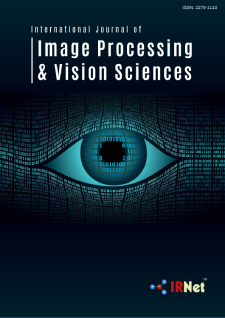International Journal of Image Processing and Vision Science IJIPVS
ISSN: 2278-1110

Abstracting and Indexing


IJIPVS
QualityAdaptive sharpness enhancement and noise removal of a QualityAdaptive sharpness enhancement and noise removal of a colour images based on the bilateral filtering colour images based on the b
Ms.V. Durgarchana
Chaitanya Engineering College, Vishakapatnam,(A.P).,
Mr.B. Praveen
Chaitanya Engineering College, Vishakapatnam,(A.P),
Mr,B. Sridhar
Chaitanya Engineering College, Vishakapatnam,(A.P).,
Abstract
In this paper, we present the Adaptive Bilateral Filter (ABF) for sharpness enhancement and noise removal of a colour images. The ABF sharpens an image by increasing the slope of the edges without producing overshoot or undershoot. It is an approach to sharpness enhancement that is fundamentally different from the unsharp mask (USM). This new approach to slope restoration also differs significantly from previous slope restoration algorithms. Compared with an USM based sharpening method, the optimal unsharp mask (OUM), In terms of noise removal, ABF will outperform the bilateral filter and the OUM. ABF works well for both gray images and color images. Due to operation of sharpening of colour images along the edge slope tend to poseterize the image using ABF by pulling up or pulling down the colour images. The proposed method is effective at removing signal noise while enhancing the experimental results in perceptual quality both quantatively and qualitatively.
Recommended Citation
1] C. Tomasi and R. Manduchi, “Bilateral filtering for gray and color images,” in Proc. Int. Conf. Comput. Vis., 1998, pp. 839–846. [2] M. Aleksic, M. Smirnov, and S. Goma, “Novel bilateral filter approach:Image noise reduction with sharpening,” in Proc. SPIE Int. Soc. Opt. Eng., 2006, vol. 6069, pp. 60690F1–60690F7. [3] A. Das and R. M. Rangayyan, “Enhancement of image edge sharpness and acutance,” in Proc. SPIE Int. Soc. Opt. Eng., 1997, vol. 3026, pp. 133–142. [4] P. Saint-Marc, J.S. Chen, and G. Medioni, ªAdaptive Smoothing: A General Tool for Early Vision,º IEEE Trans. Pattern Analysis and Machine Intelligence vol. 13, no. 6, pp. 514, June 1991. [5] H. Kotera, Y. Yamada, and K. Shimo, “Sharpness improvement adaptive to edge strength of color image,” in Proc. IS&T/SID Eighth Color Imaging Conf., 2000, pp. 149–154. [6] S. Fleishman, I. Drori, and D. Cohen-Or, “Bilateral mesh denoising,”ACM Trans. Graph., vol. 22, no. 3, pp. 950–953, 2003. for image size Conversion,” in Proc. ICIP, 2005, vol. 2, pp. 986–989. [9] M. Elad, “Retinex by two bilateral filters,” in Proc. 5th Int. Conf. Scale- Space, 2005, pp. 217–229. [10] S. Paris, P. Kornprobst, J. Tumblin, and F. Durand, “A gentle introduction to bilateral filtering and its applications,” presented at the ACMSIGGRAPH, 2007. [11] H. Hu and G. de Haan, “Classification-based hybrid filters for image processing,” in Proc. SPIE Int. Soc. Opt. Eng., 2006, vol. 6077, pp. 607711–607711. [12] B. Zhang, J. Gondek, M. Schramm, and J. P. Allebach, “Improved resolution synthesis for image interpolation,” in Proc. IS&T’s NIP22, 2006, pp. 343 345. [13] S. Kim and J. P. Allebach, “Optimal unsharp mask for image sharpening and noise removal,” J. Electron. Imag., vol. 14, no. 2, pp. 023007–1, 2005. [14] P. Li and J. P. Allebach, “Tone-dependent error diffusion,” IEEE Trans. Image Process., vol. 13, no. 2, pp. 201–215, Feb. 2004. [15] D. Barash, “A fundamental relationship between bilateral filtering, adaptive smoothing, and the nonlinear diffusion equation,” IEEE Trans. Pattern Anal. Mach. Intell, vol. 24, no. 6, pp. 844–847, Jun. 2002